In 2014, Arch Daily published an article predicting the architectural trends that will define the next decade. It features a range of futuristic marvels from hypnotic bridges in China and inflatable concert venues in Japan, to Mexico’s natural disaster-proof citadels and Sweden’s wooden skyscrapers.
Just to be clear, these are all mere proposals and have yet to break ground as far as we know. However, it’s still interesting to know how a creative mind can come up with such fascinating ideas. Take the wooden skyscrapers as an example.
Skyscrapers – in general – are supposed to have steel skeletons and concrete foundations. But this proposal by C.F. Moller, in collaboration with Dinell Johansson, will focus on the use of solid and cross-laminated timber elements. The planned residential tower, the tallest wooden skyscraper in the world if it all comes to fruition, looks to promote environmentally friendly and durable materials for a relaxed and healthy indoor climate. Essentially, some may frown upon the idea, claiming it to be too old fashioned in today’s modern world. Although when it all comes down to it, sometimes it’s pleasing to rather go back to the basics and make the most of natural resources such as wood.
Of course when it comes to understanding architecture’s roots, one can simply study and appreciate the Ancient Chinese, an era that highlights the efficient use of wooden materials. These days, when talking about timber and its structural uses, some of the first things that come to mind are countryside cabins, holiday homes, and the rural retreats. All of which are generally constructed with standard work tools such as routers and drills, that Screwfix states remain an industry essential even to this day. However, the proposed 34-storey wooden skyscraper project will obviously require more than just a set of power tools to complete such a monstrous structure.
The plan is to build the Stockholm residential community with one of the environment’s most original materials, as a way to withstand various forces of nature. In contrast to common knowledge, wood is more fire resistant than both concrete and steel. Even with its low weight, this material can also bear heavy structures. Though the skyscraper’s pillars, beams, and interiors primarily feature wood, it’ll still have a concrete core – for apparent reasons.
From wooden apartment features to glass-covered verandas and solar panels, social and environmental sustainability are at the forefront of this proposed wooden skyscraper project. All in all, though it’s a classic take on modern day architecture, it still underlines innovative techniques on how to make the most of natural resources in an ecologically friendly way.
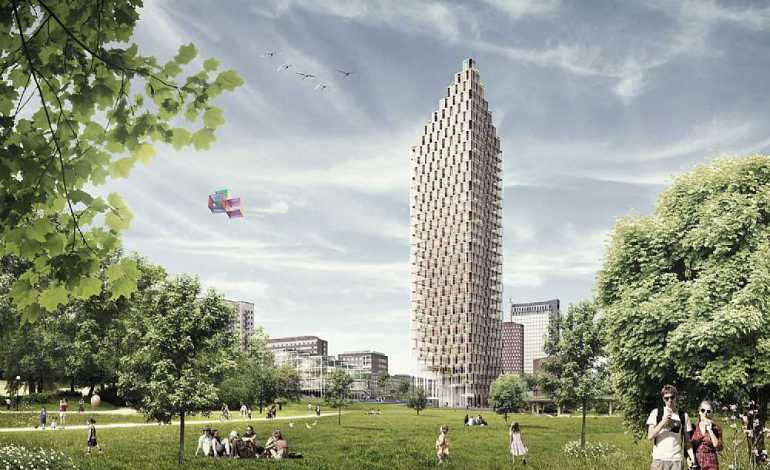
The proposed design for a 34-floor wooden skyscraper in Stockholm to be completed in 2023
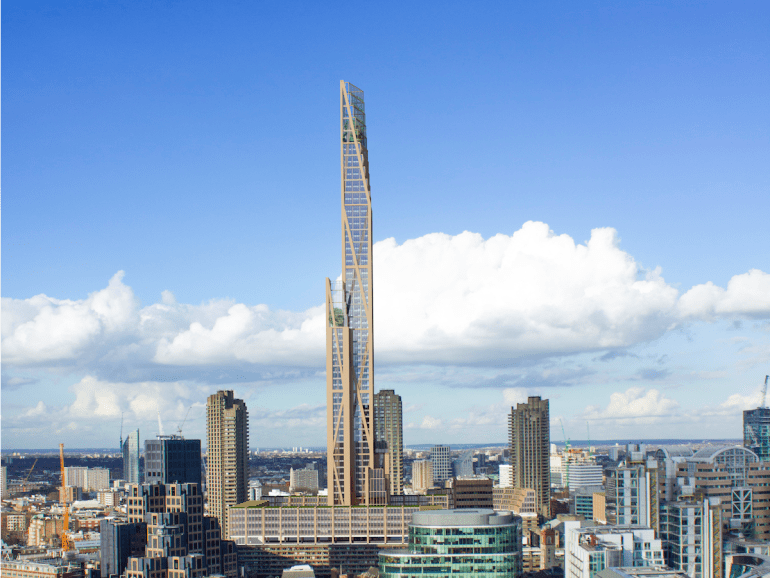
Oakwood Towers, the proposed 80-storey wooden skyscraper to be erected in London – via Business Insider
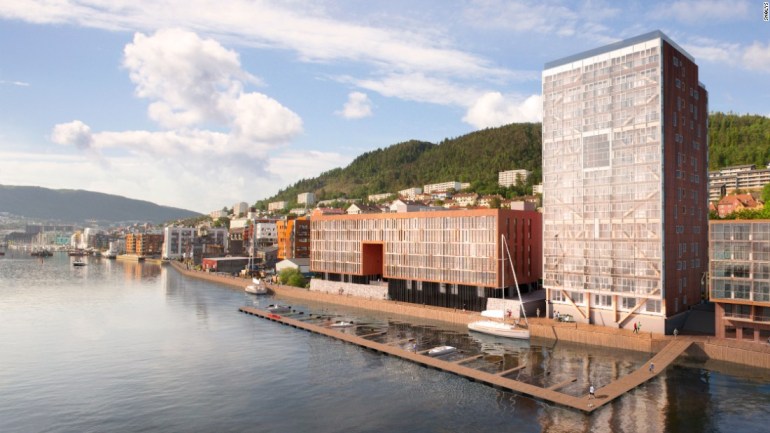
The Treet – translated as tree – Building in Bergen, Norway, completed in 2014, wood construction at its best
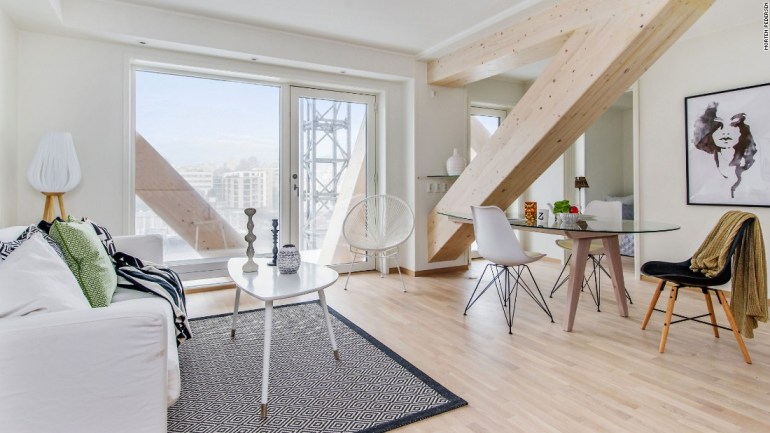
Interior of the Treet Building in Bergen, Norway showing the huge timber structure
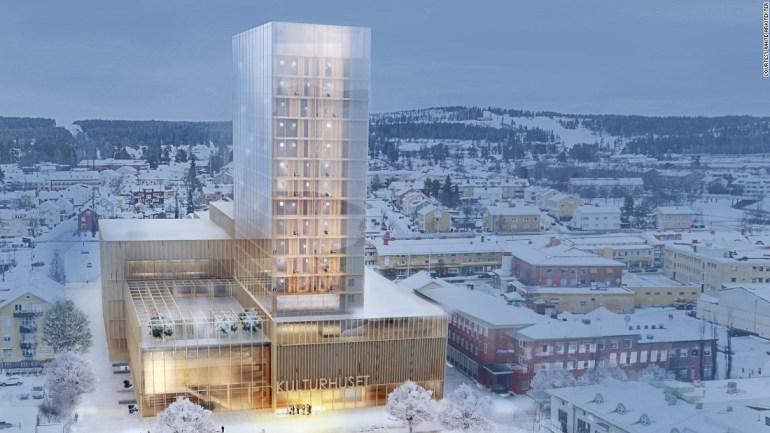
The proposed Sida Vid Sida – side by side – building designed by Swedish architects White Arkitekter – via CNN
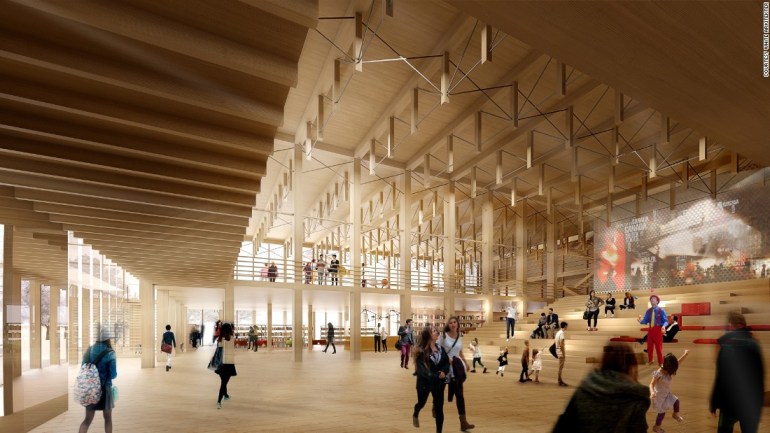
Interior of the “Sida Vid Sida” building proposed to be built in Skelletea and expected to be finalised in 2019
If you enjoy reading my blog, please consider giving my Facebook page a “like“


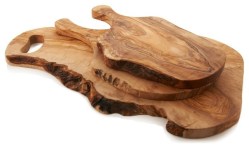
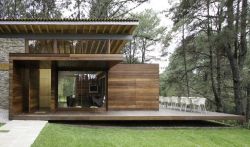

Hi Machteld, wat een schitterend gebouw in Zweden!dat is
Dankjewel Mam! Bijzonder wat het effect van hout in de architectuur kan hebben hè? Dank voor je comment!